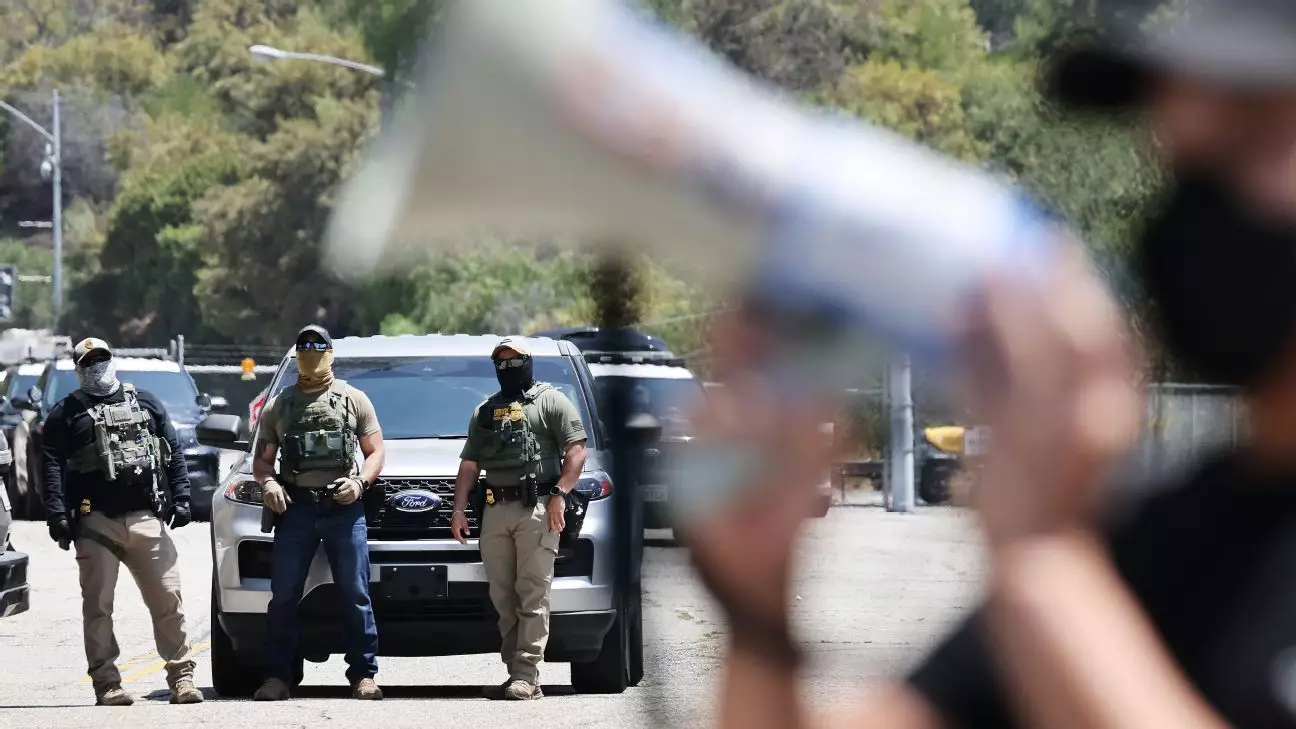In a startling turn of events, Thursday morning at the iconic Dodger Stadium, federal agents from the Department of Homeland Security (DHS) sparked significant backlash from the local community. The agents arrived in unmarked vehicles, igniting fears and protests focused on immigration enforcement. Social media quickly erupted, echoing sentiments of dissent that have characterized recent weeks in Los Angeles. The palpable tension underscores a community on edge, grappling with new immigration policies that are reshaping the fabric of its neighborhoods.
The Los Angeles Dodgers, which pride themselves on their community involvement, found themselves at the center of this controversy. President Stan Kasten expressed disappointment in having to postpone the announcement of new initiatives aimed at aiding local immigrant populations. The team, caught in a storm of social unrest, appeared unsure about navigating the complex waters between national security and local solidarity. “We’ll work with groups that were involved with our programs,” Kasten indicated, signifying a desire to remain supportive while also highlighting the unexpected challenges posed by federal actions.
A Local Event with National Implications
This incident goes beyond local sports; it exemplifies how national immigration policy is disrupting community dynamics. The arrival of federal agents was not merely an operational enforcement action—it became a flashpoint for widespread protest. Protesters gathered quickly, their presence a visible and vocal response to what they perceived as an overreach by federal law enforcement. The situation escalated quickly, with LAPD intervening to disperse the crowds, illustrating how immediate tensions can spiral out of control.
What is particularly striking is the complicated web of communication among various federal agencies involved in immigration enforcement. U.S. Customs and Border Protection (CBP) claimed that their presence was not part of a broader enforcement action, yet the ambiguity surrounding their intentions fed the anxiety permeating the stadium’s surroundings. In a dramatic shift, U.S. Immigration and Customs Enforcement (ICE) denied any involvement, creating further confusion. This discord among federal bodies not only undermines public trust but also reflects poorly on the clarity of immigration laws. The community is left questioning whom to believe while navigating a reality fraught with fear and uncertainty.
Broader Protest Movement
The events at Dodger Stadium are a microcosm of a larger protest movement that has gained momentum in Los Angeles. Weeks earlier, protests erupted following a series of ICE raids that swept through the city, leading to the detention of numerous workers. This galvanized local activists and prompted them to occupy major freeways, setting vehicles ablaze in symbolic acts of defiance against what they see as an oppressive system. The city’s response, involving tear gas and rubber bullets, only deepened the rift between law enforcement and community members.
The situation brings to light the struggles of immigrant communities feeling the weight of a hostile environment amid tightened immigration policies. City leaders and community organizations have reported increased visibility of ICE activities in everyday locations, from libraries to local businesses. This omnipresence creates an atmosphere of constant vigilance, where fear prevails over a sense of safety.
Implications for Local Leadership and Community Solidarity
The role of the Dodgers in this scenario illustrates a larger challenge facing local institutions—they are often thrust into political landscapes they’re not fully prepared to navigate. As the Dodgers strive to forge partnerships with immigrant advocacy groups, they grapple with their image in a divided social climate. While promised initiatives aimed at supporting these communities are undoubtedly essential, they risk losing credibility if they cannot act responsively to federal disruptions.
Community solidarity emerges as a critical countermeasure against the adversities posed by immigration enforcement. As protests ignite across the city, collective action becomes a significant means of advocacy, reflecting the resilience of those marginalized by policy decisions. It raises questions about the efficacy of traditional protest methods and the potential for new, collaborative strategies to foster immigrant rights.
Los Angeles finds itself at a crossroads, embodying the complexities of immigration enforcement against the backdrop of a vibrant yet vulnerable community. The unfolding events serve as a reminder of the interconnectedness of sports, politics, and local activism, ultimately shaping the narrative of a city that is both a cultural beacon and a battleground for social justice.


Leave a Reply